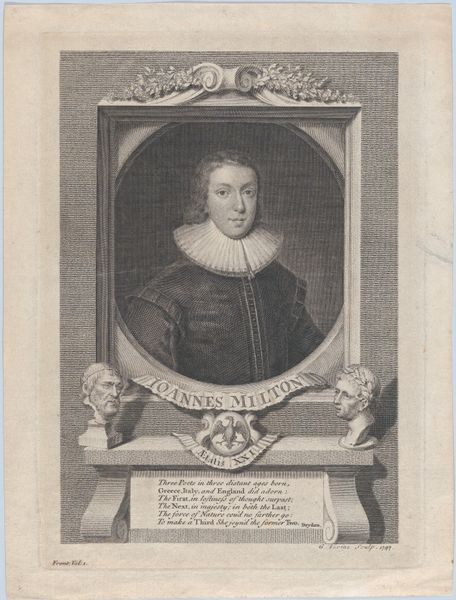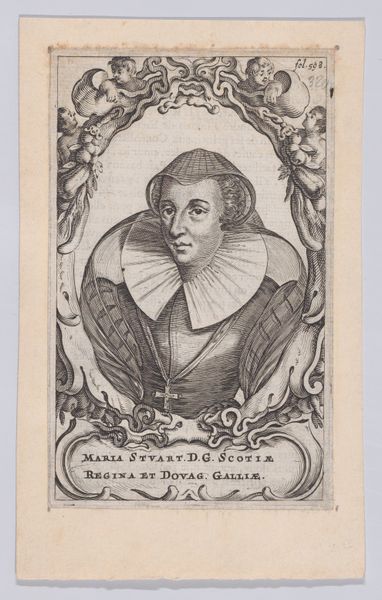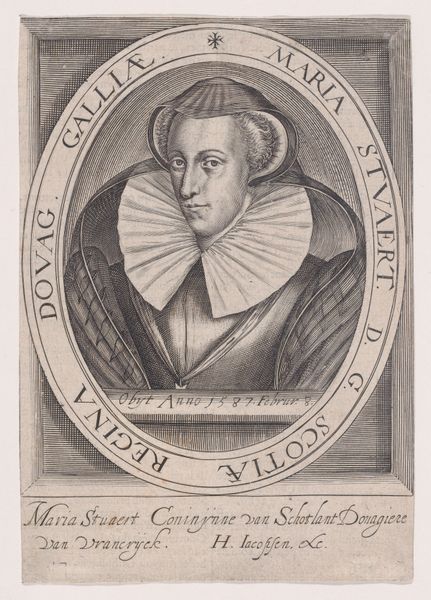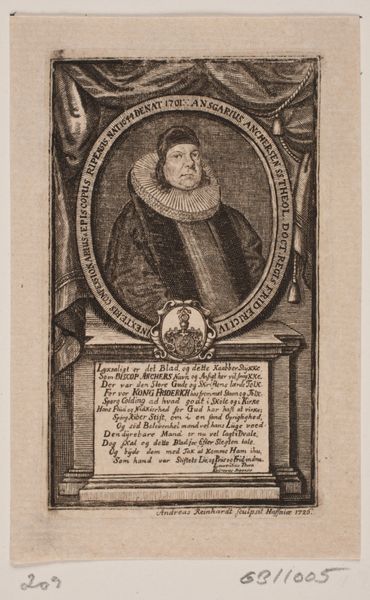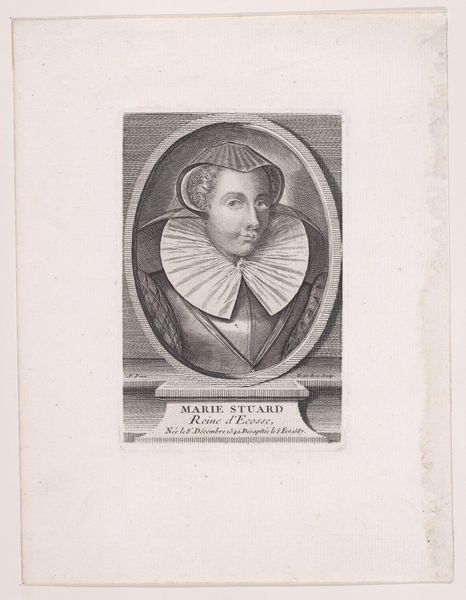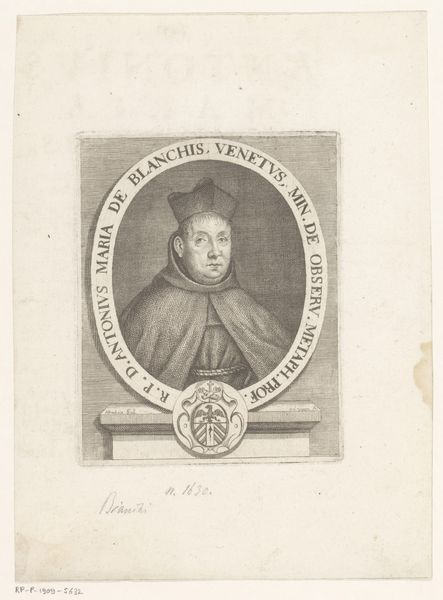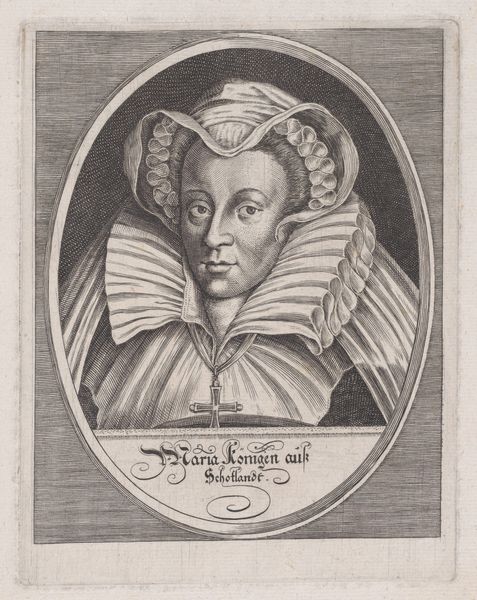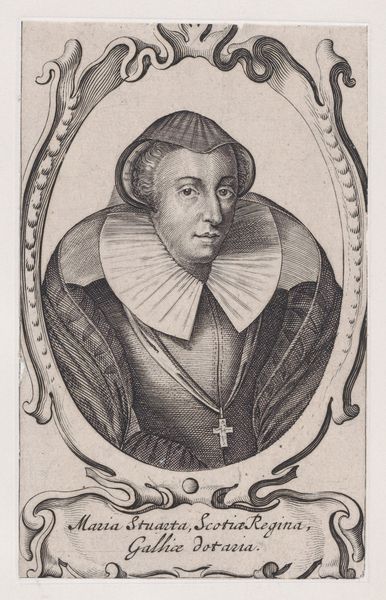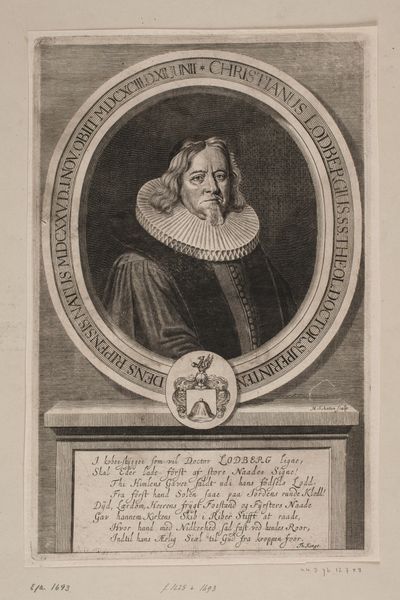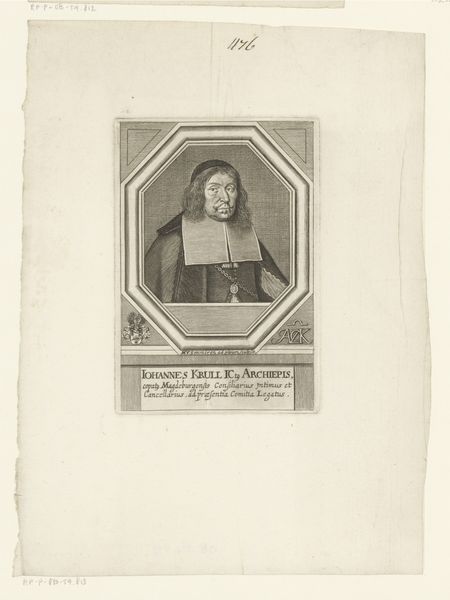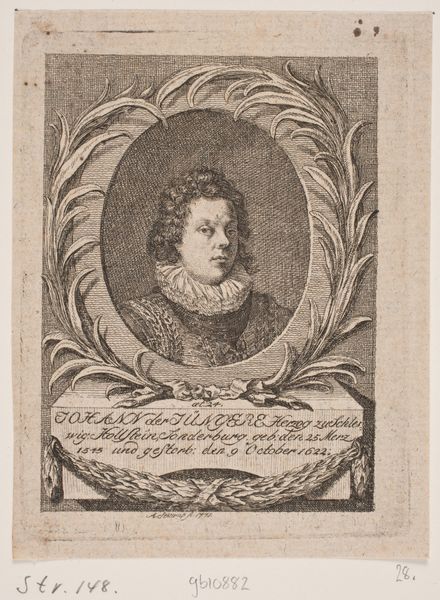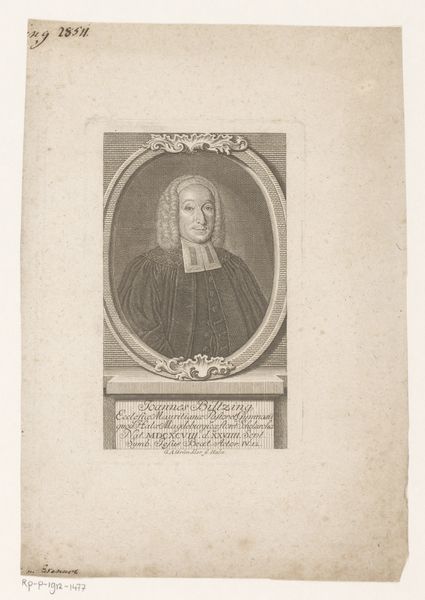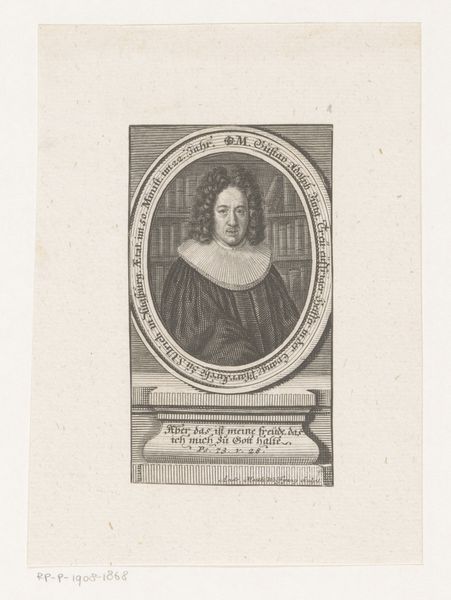
Dimensions: Sheet: 8 11/16 × 6 3/8 in. (22.1 × 16.2 cm)
Copyright: Public Domain
Curator: This print, created in 1762 by Jakob Andreas Fridrich the Younger, is a portrait of Mary, Queen of Scots. The primary medium appears to be engraving. What are your initial thoughts? Editor: It strikes me as quite mournful. The draped fabric behind the central image feels like a stage curtain drawn for a tragedy. The detailed collar and ornamentation only intensify the sense of aristocratic burden and impending doom. Curator: Yes, the artist uses the detailed engraving to create a luxurious but ultimately somber mood. Look at how the fabric’s texture contrasts with the smoothness of her face, drawing attention to the construction of the piece itself. The engraving technique would have been labor-intensive, mirroring the labor and expense of royal life, no? Editor: Absolutely, and to expand that context, consider the ongoing debates surrounding Mary’s legacy during the 18th century. Was she a victim of political maneuvering, or a ruler undone by her own ambitions? This print places her firmly within a visual language of martyrdom. The cross around her neck becomes a potent symbol of religious conflict, not just personal faith. Curator: That’s interesting. I'm drawn to the printed text just below the portrait—almost like an inscription on a monument. This choice of material, the print, makes this image quite reproducible. That act of dissemination affects meaning and historical perception. Editor: Exactly. We also need to consider issues of gender here. Mary’s power, sexuality, and perceived weakness as a female monarch are critical elements. How was her body itself a site of political struggle and, ultimately, execution? Curator: True, but look at the labor involved in producing a print like this, at a time when such images influenced the popular understanding of history. Who bought these prints? What workshops were responsible for the engraving? The materials and method of distribution shape not only our perception of Mary but the very nature of historical memory. Editor: That tension, between Mary as an object of political manipulation, represented within a larger cultural discourse, and as a subject within history itself, I find endlessly compelling. Thank you for bringing attention to it. Curator: Indeed. The print reveals so much, about labor and the intersection of image, and how an engraving makes that knowledge accessible, offering yet another point of reflection.
Comments
No comments
Be the first to comment and join the conversation on the ultimate creative platform.
